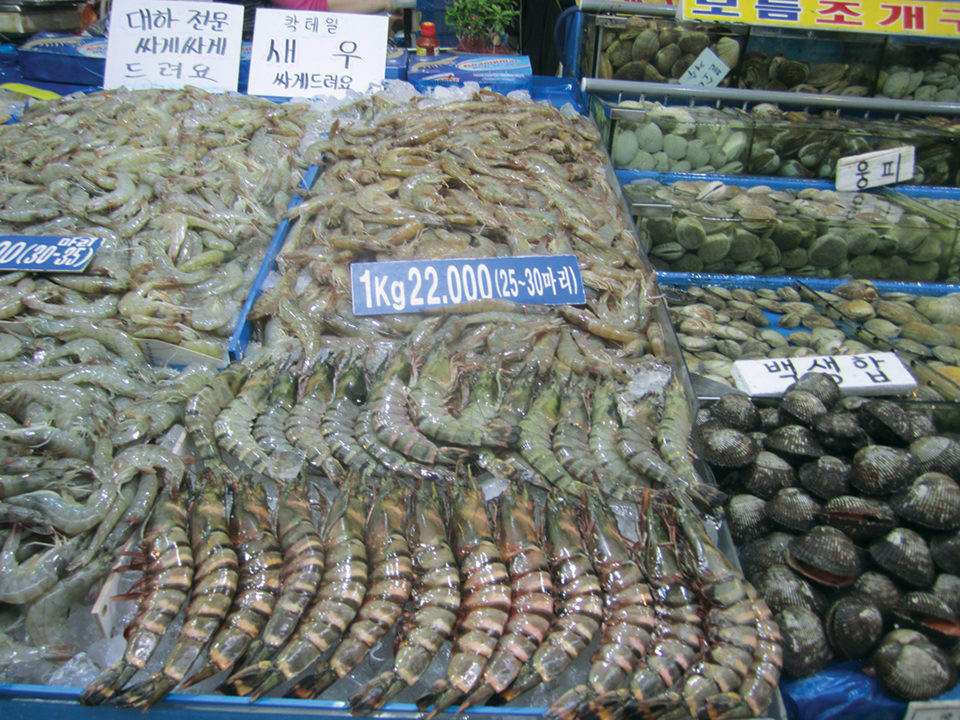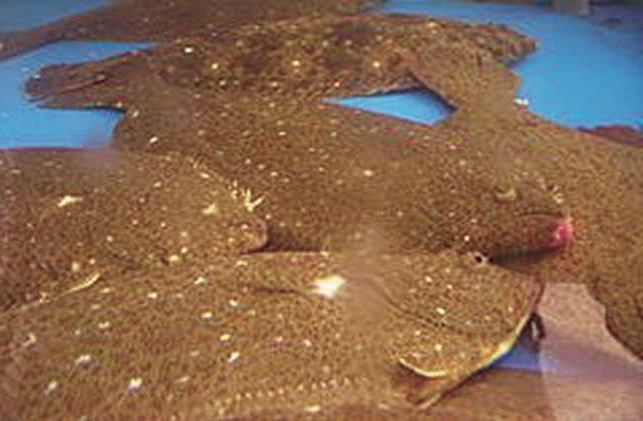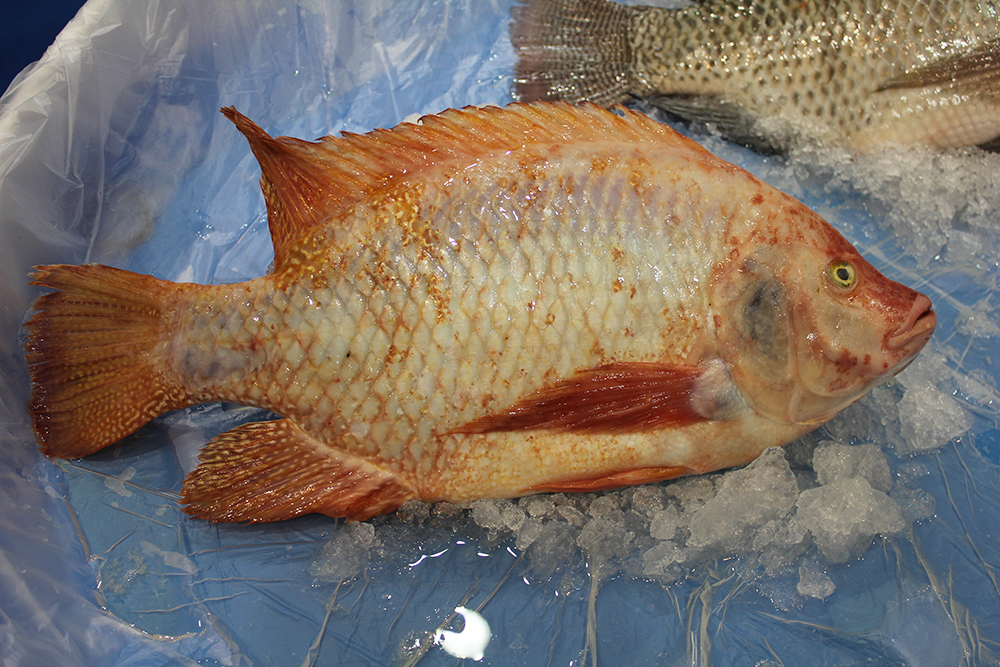High consumption, improved health

Only about 20 percent of the land mass of the Republic of Korea is usable due to many mountains. Hence, the Korean population has always had a love of the sea and the importance of seafood in food security.
Years of capturing wild fish together with improved fishing technology have led to a continuous decrease in capture production in the country in recent years, and consequently led to greater attention on aquaculture to meet the increasing demand for aquatic products.
Extensive aquaculture has been practiced in Korea for several hundred years, but modern intensive aquaculture (mainly for seaweed and shellfish) did not emerge until the 1960s. Total annual aquaculture production was less than 100,000 metric tons (MT) in this period. Annual production of about 147,000 MT in 1971 has now reached nearly 1.5 million MT. Current aquaculture production in South Korea is dominated by seaweeds, with approximately 800,000 MT harvested annually, followed by mollusks and finfish.
Kimchi
In Korean seafood markets, you can watch the auctions before choosing your fish from the vast array of stalls and take it to a restaurant close by to have all the other Korean delicacies that make a meal.
When it comes to a Korean meal let me say one word – kimchi. Koreans eat over 18 kg/person of this super-spicy condiment each year. It is taken for granted as an integral part of any meal – breakfast, lunch or dinner. The reddish fermented cabbage dish – made with a mix of garlic, salt, vinegar, chili peppers and other spices – is an important part of the high-fiber, low-fat diets in the Republic of Korea (RoK).
Kimchi is charged with vitamins A, B, and C (providing over 50 percent of the daily recommended amount), but its largest benefit may be in its “healthy bacteria” called lactobacilli, found in fermented foods like yogurt. The bacteria help with digestion, plus seem to help stop and even prevent yeast infections, according to medical experts.
One health magazine named kimchi in its list of top five “World’s Healthiest Foods” for being rich in vitamins, aiding digestion and even possibly reducing cancer growth. That same magazine credited kimchi as the “diet that has kept obesity at bay” in Korea and praised its health benefits.
The Western fast-food chains do not appear to have broken through in RoK as much as they have in Japan. If you were brought up on a kimchi diet, it would likely be difficult to change.
Metabolic syndrome
In July 2010, an article in the Journal of the American Dietetic Association titled “Intake of Fish and n-3 Fatty Acids and Future Risk of Metabolic Syndrome” was based on study at the Department of Foods and Nutrition of the College of Natural Sciences at Kookmin University in Seoul.
The study investigated the effects of fish and n-3 fatty acid intake on the incidence of biochemical processes involved in the body’s normal functioning based on risk factors that increase the chance of developing a disease.
A population-based prospective cohort study included 3,504 male and female Koreans aged 40 to 69 years from the Korean Genome Epidemiology Study. At the beginning of follow-up, all individuals were free of metabolic syndrome and known cardiovascular disease.
Each participant completed a food frequency questionnaire. Incident cases of metabolic syndrome were identified by biennial health examinations during a follow-up period between April 2003 and November 2006.
High consumption of fish and n-3 fatty acids was significantly associated with triglyceride levels and high-density lipoprotein cholesterol levels among the metabolic syndrome components for men, but the lower risk of metabolic syndrome was not found among women.
Heart disease in Asia
The prevention of cardiovascular disease in Asia is an important issue for world health because half of the world’s population lives in the region. The Republic of Korea and other Asian countries and regions have greater mortality and morbidity from stroke than from coronary heart disease, whereas the opposite is true in Western countries. The reasons why this situation is observed in countries with rapid and early-phase westernization, such as Japan and South Korea, are very interesting.
A recent multiethnic study of 6,700 men and women in the United States showed that the presence of coronary artery calcification predicted future heart disease similarly in whites and Chinese Americans, although the latter had lower prevalence and slower progression of coronary artery calcification. Among men in a post-World War II birth cohort, Japanese Americans and whites had a similarly high prevalence of coronary artery calcification that was significantly higher than that in Japanese people living in Japan.
Salt levels
One of the issues with both the diets of Japan and RoK is the increased salt levels, which coupled with high levels of smoking create greater stroke risks. While Japan has its miso (mainly fermented soybeans), the people of RoK have doenjang (traditional fermented soybean paste). Both soy products have good quantities of salt added.
Perspectives
Korean food is hearty and distinct. One of its most interesting characteristics is that preparation often involves the process of fermentation. Fermentation was frequently utilized by enlightened spiritual practitioners of ancient Korea to create food that would benefit all people. In the old days, fermented foods such as soy sauce were important sources of protein for Koreans, and they remain popular to this day.
Why is fermented food so good for the health? Fermentation was a way of preserving food, and the process brings about interesting changes to the flavor and texture of food. The experts say when food is fermented, it encourages the growth of healthy bacteria while preventing the growth of spoilage-causing bacteria. Doing this successfully requires special ingredients and carefully controlled conditions, such as proper temperature and pH.
(Editor’s Note: This article was originally published in the September/October 2012 print edition of the Global Aquaculture Advocate.)
Author
-

Roy D. Palmer, FAICD
GILLS
2312/80 Clarendon Street
Southbank VIC 3006 Australia
www.gillseafood.com[109,111,99,46,108,105,97,109,103,64,114,101,109,108,97,112,100,121,111,114]
Related Posts

Health & Welfare
Korean researchers study protein levels, P:E ratios in olive flounder diets
The authors conducted research to determine the optimum dietary protein levels and protein:energy ratios for different age groups of olive flounders.

Responsibility
A look at integrated multi-trophic aquaculture
In integrated multi-trophic aquaculture, farmers combine the cultivation of fed species such as finfish or shrimp with extractive seaweeds, aquatic plants and shellfish and other invertebrates that recapture organic and inorganic particulate nutrients for their growth.

Intelligence
Adding value to tilapia to tap into U.S. market
New markets for tilapia and expansion of existing ones can be created by planning and implementing properly designed geographic strategies to meet discriminating consumer preferences. Low labor costs in most producing countries promotes value-adding by the production of fresh fillets.

Health & Welfare
Japanese eel aquaculture in Korea
After a decade of research, Korea has produced individual glass eels for Japanese eel aquaculture. Despite dependence upon the wild seed, Japanese eel aquaculture production has been growing significantly and comprises over 27 percent of Korea’s freshwater aquaculture.

